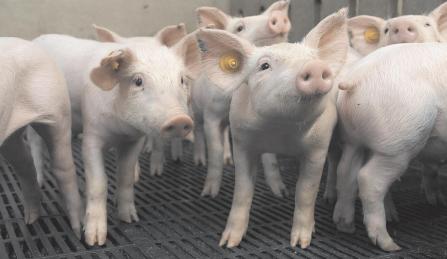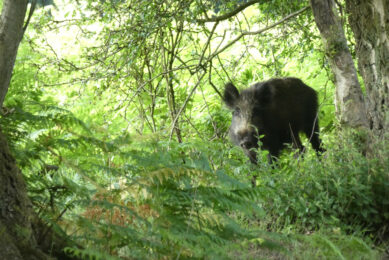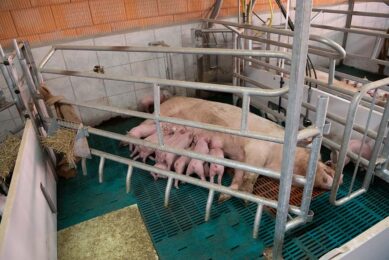Batch management production systems

There is a strong need for better organisation of workload and pig flow in the industry. Large batches of piglets of the same age, breed and health status are nowadays very much in demand. Batch management systems have become popular in Europe. What system is best for whom?
By Leo Suls, Janssen Animal Health, Beerse, Belgium
The pig sector is under enormous pressure to decrease the use of antibiotics and to increase the health status of pig farms. Strict use of all in all out principles and separation of age groups are important tools to achieve this. Farm facilities need to be used to maximum capacity, while overstocking must be avoided.
Batch management production systems (BMS) help to improve or optimise all of the above mentioned factors. Today, virtually all modern sow farms operate with some kind of batch management system. It makes a great deal of difference whether batches are weaned every week, or with intervals of 2-, 3-, 4- or 5 weeks.
1-week BMS
A traditional 1-week system would also meet the definition of batch management production, on condition there is only one fixed day of weaning. The advantages of a 1-week system are its flexibility, limited peaks in labour requirement and the system is simple to operate. In practice, however, the so-called flexibility of a 1-week system often results in chaotic management and poor organisation of labour and pig flows.
When sows are weaned on Thursday for example, the majority of inseminations will be done from Monday till Wednesday the following week. But around 20% of the inseminations (gilts, irregular returns, sows with a prolonged weaning to oestrus interval) are inseminated over the rest of the week. In fact inseminations take place almost every day of the week and consequently there will be sows farrowing every day of the week.
A true BMS with weekly batches involves a very rigid planning and strict organisation of all tasks on the farm, starting of course with mating management in which all sows should be inseminated within a 60-hour timeframe. Most farms work with four or five farrowing compartments. As piglets are born every day it is impossible to organise strict separation of age groups. In practice, all in-all out is seldom applied in the farrowing and in the weaning compartments.
3-week BMS
The most common BMS is the 3-week system. This easy-to-manage system operates on a fixed 21-weeks sow cycle in which seven groups can be inseminated with three weeks intervals. Regular returns are easily re-integrated in the next groups, the farrowing crates are refilled every six weeks and the standard weaning age is 28 days (see Figure 1).
With the constantly increasing prolificacy of sows the 4-week weaning age becomes a challenge for certain farms. Changing to a 3-week BMS with a 3.5 week weaning age is an option (see Figure 2). This means that after every seventh group the planning jumps forward with half a week. The main disadvantage of this system is of course the more complex planning of labour and animal flows.
Especially in France, where the 3-week BMS has been widely used for decades, there are meanwhile quite some farms that operate a 3-week system with weaning at 21 days. This involves significant challenges:
1. Every 20th week, the planning jumps forward with a full week.
2. A very inefficient use of the farrowing crates.
3. Farrowing and weaning coincide causing very high labour peaks
4-week BMS
Once producers have decided for a 3-week weaning age, a 4-week BMS is probably much more appropriate. A 4-week BMS operates on a fixed 20-week sow cycle with five groups inseminated with a 4-week interval (see Figure 3). The system results in a very stable labour planning and requires a very strict pig flow.
The 4-week BMS brings much more structure and logic in the planning and in animal flows. The system pushes the farm manager to adhere to all in-all out procedures and strict separation of age groups. The farrowing house contains only one synchronous sow group and all piglets are born within a timeframe of three to four days.
At weaning all farrowing crates are emptied, cleaned and disinfected. The next sow group is brought in as soon as possible since these will farrow the following week. Normally, there is a three to five day down period between the last piglet out and the first new piglet born.
It becomes very easy to operate a strict internal bio-security protocol on a sow farm with a 4-week BMS. There are only four groups that need to be kept separated: the weaned and pregnant sows, the farrowing house and two groups of weaned piglets that have a four week age difference.
Farrowing crates are used very efficiently with 13 litters per year. Regular returns are easily reintegrated into groups. A 4-week BMS holds high potential for improvement and optimisation. A personal survey in Belgium shows that farms on a 4-week BMS sizing between 400 and 800 sows reached a labour productivity between 4.5 and 5 piglets per hour. Significant improvements in the heath status of farms that changed over to a 4-week BMS or 5-week BMS have also been demonstrated.
Farms that change from a 3-week to a 4-week BMS are normally able to increase sow numbers with 50% without investing in extra farrowing facilities. In most cases such change-overs allow for a doubling of total farm income.
It is important to note however that operating a 4-week BMS requires a high level of professionalism from the farm manager, a suited sow breed (excellent breeding results) and
facilities that allow for weaning of 3-week old piglets.
facilities that allow for weaning of 3-week old piglets.
2-week BMS
The 2-week BMS is comparable to the 4-week BMS. It also works on a 20-week sow cycle, but with ten groups in stead of five. Some major advantages of a 4-week BMS, however, are lost in the 2-week BMS.
Separation of age groups is more complicated and the organisation on internal biosecurity protocols is more complex. On the other hand, the labour peaks are less high and leaves more space for flexibility.
5-week BMS
The 5-week BMS has been gaining popularity in the last couple of years. It operates on a fixed 20-week sow cycle with four sow groups at a five-week interval (see Figure 4). Piglets are normally weaned at three weeks of age, but weaning at 3.5 weeks and four weeks are also options.
The main advantages of the 5-week BWS are related to improved health status and labour planning. Important drawbacks include the difficult reintroduction of repeat breeders in subsequent groups.
The farrowing house is operated strict all-in all-out (AIAO), but because regular returns will farrow two weeks ahead of the main sow group, an extra (small) farrowing compartment has to be foreseen. Farrowing crates are used at a 10.4 rotations per year.
Housing costs
The farrowing house is the most expensive part of a farm. Rearing 13 litters per year in a 4-week BMS, compared to only 8.6 in a 3-week BMS represents a significant cost saving of more than €1.50 per piglet in depreciation, maintenance and energy. Building larger compartments represent another 5-10 % saving in construction and maintenance costs.
Bio-security
A 4-week BMS and 5-week BMS allow for a very simple farm design with easy separation of different age groups. Separate sanitary locks can be foreseen per weaned group, for the farrowing house and for the mating and gestation areas.
Labour efficiency
Labour planning on conventional farms is often tricky. Working with BMS, be it in a one or multiple week system will bring much more structure and logic. There is no need for multi-tasking, the focus is on one (larger) major activity. Especially with external labour it is essential that every task can be well planned and executed according to clear protocols. In particular, with a 4-week BMS virtually all tasks can be fixed in the 28-day agenda, on a fixed day and fixed hour, that repeats every four weeks.
BMS will also create labour peaks. Especially in the 4-week BMS and 5-week BMS there are very busy and calm periods. Labour planning will require more flexibility. But in family-run farms the calm periods are much appreciated, to keep up the paper work of for maintenance tasks or to plan some holidays.
Results
Working with large, separated batches creates the opportunity to compare production results per batch. The results of active changes in feeding or other management procedures can be monitored quickly and accurately.
Health status
It is evident that age-segregated rearing and following strict AIAO procedures with respect of a full week empty period between batches will have a dramatic positive effect on the farm heath status.But on how many farms is this theory brought into practice? With BMS it becomes easier to follow the intended procedures. BMS can be seen as a kind of lever towards a better health status. More important in our experience is that a 4-week BMS forces farmers to follow the rules.
In Belgium there is experience with very significant improvements on farms that changed to a 4-week BMS. The combination of strict weaning at three weeks of age, strict segregation of age groups and applying AIAO resulted in fast reduction of infection pressure, especially for respiratory infections.
Improved production results
More structure, better planning, a more meticulous attitude in execution of tasks, comparing the results between the groups; All of these points are opportunities to improve production results at all levels in the farm. Working in a strict BMS makes it much easier to put them into practice.
Easy cross-fostering
When large groups of sows farrow in a short period of time, the piglets can easily be divided over the different sows, with respect to their lactating capacity.
Financial results
The result can be large batches of homogenous healthy piglets from a single source. A 300 sow farm in a conventional system, producing around 150 piglets a week, could increase to 650 piglets per batch with a 4-week BMS.
In addition, on closed farms or fattening units working with large batches from a single source gives opportunities for financial improvement. Working strict AIAO becomes evident. Separation of males and females is easier. And selling full truck loads of uniform slaughter pigs will results in better prices.
Source: Pig Progress Volume 25 nr 5











